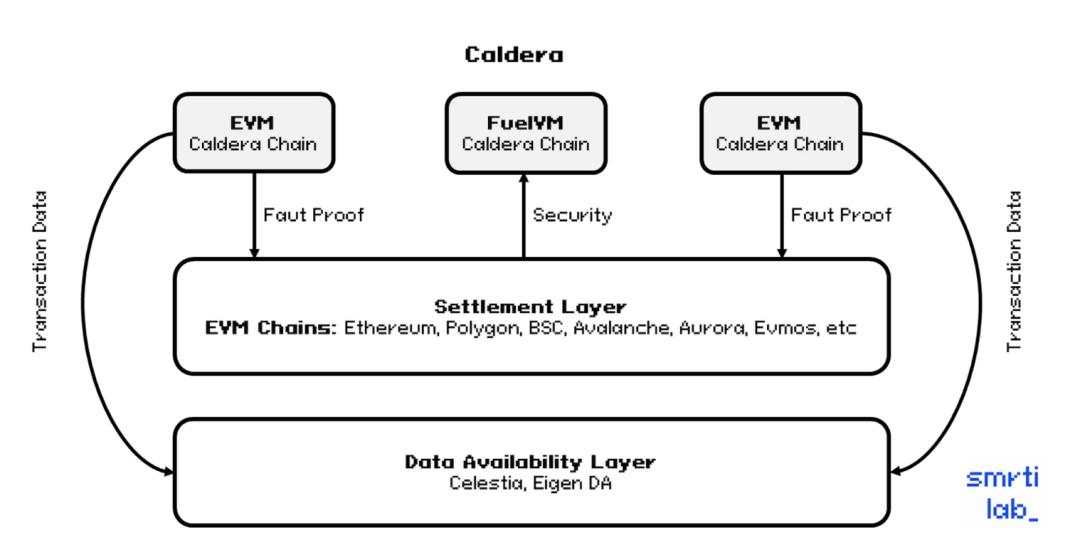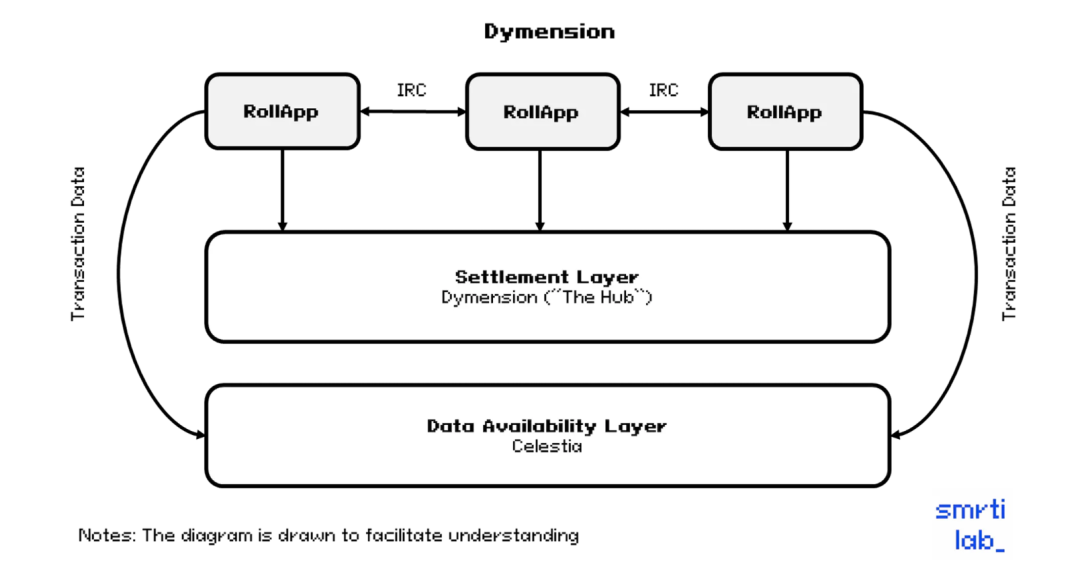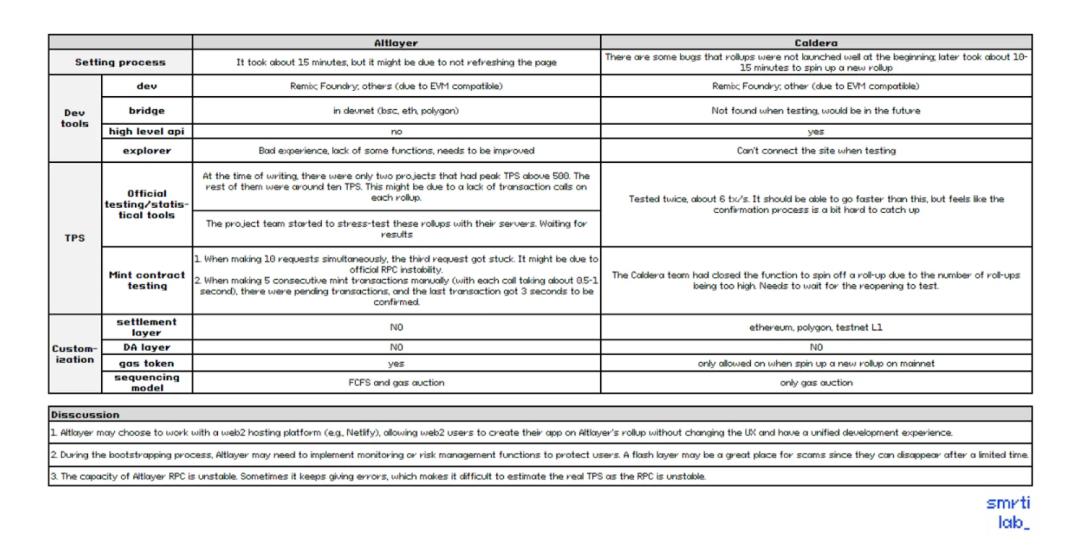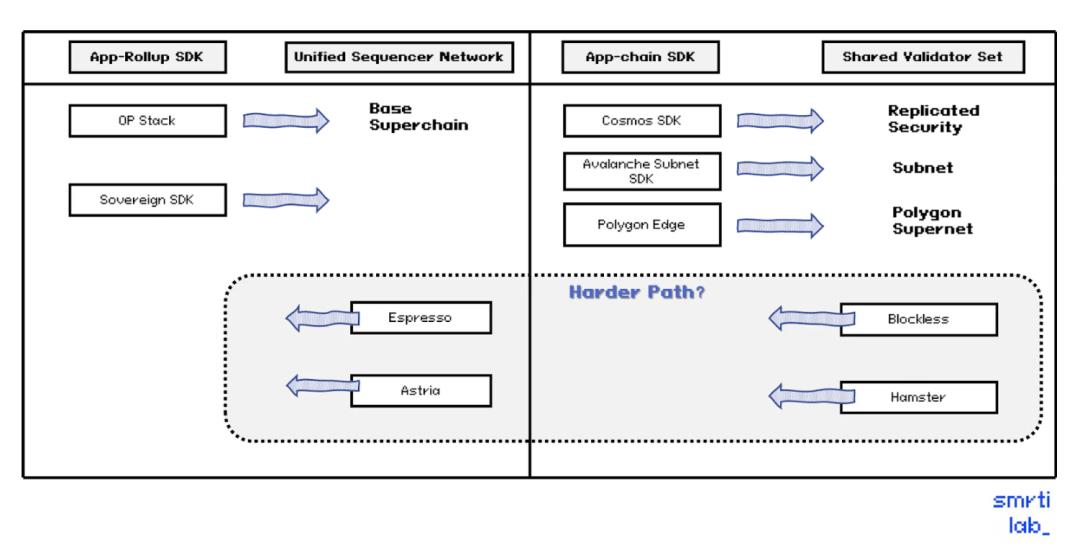Just a few clicks of the mouse, and a new Rollup can be deployed?
Author: Smrti Lab
Compiled by: Modular 101
The original English version was published on March 28, 2023. This article is the second half of the content. For the first half, please refer to: "In-Depth Analysis of RollApp Ecosystem: What are the Pros and Cons of Four Application-Specific Rollup Solutions?"
In this section, the Rollup as a Service (RaaS) solution in the RollApp ecosystem is mainly introduced, comparing the advantages and disadvantages of the four solutions: Caldera, AltLayer, Dymension, and Eclipse. In addition, a unified sorting network solution is also introduced.
4. In-Depth Discussion of RaaS Solutions
Although it may be convenient to build a specific application's rollup from scratch using an SDK, there are still certain learning difficulties and obstacles. What smart contract developers want is to be able to customize their own RollApp without writing code or understanding the basic knowledge of the actual rollup chain. Therefore, rollup as a service (RaaS) has emerged, making the development process similar to the dapp experience, and it is currently very popular.
Each RaaS provider allows developers to easily build and launch their own custom, dedicated rollup with just a few clicks. Some RaaS providers may be more suitable for specific ecosystems than others (e.g., Caldera is suitable for EVM, Dymension is suitable for IBC, Eclipse is suitable for SVM, etc.). However, these modular solutions ultimately allow for the addition of different components over time, such as providing a new VM with higher throughput or a new DA (data availability) solution with stronger security guarantees.
Caldera

Figure 7. Caldera Structure
Caldera (formerly known as 0xConstellation) is a rollup service provider focused on the EVM ecosystem. Caldera chain is high-performance (one block per transaction), customizable, and compatible with EVM, which means teams can leverage their familiar existing EVM tools, such as RPC and wallets.
Execution Layer
Currently, developers can deploy their own rollup using the Ethereum VM. However, the team has explicitly stated that they will add multiple VMs in the future. Some VMs mentioned in their documentation include SVM and FuelVM.
After selecting the preferred VM, developers can add their own custom features, such as tokens for gas, sorter positions, bridging fees, and several other customizations (depending on the modules provided by each solution over time).
Settlement Layer
The Caldera chain can be referred to as a settlement rollup. The Caldera chain can settle on any EVM-compatible chain. While the most popular choices are Ethereum and Polygon, developers can also choose other options, including BSC, Avalanche, Evmos, Aurora, etc.
It is worth noting that this settlement layer is where all proofs are sent, which means that ultimately, each Caldera chain will depend on the security of its underlying EVM-compatible settlement chain.
DA Layer
Like other solutions, Caldera is very open in its choice of DA layer. The team can choose to send their transaction data directly to an EVM settlement layer (such as Ethereum, Polygon, BSC, etc.) or to a dedicated DA solution, which currently includes Celestia or Eigen DA.
AltLayer

Figure 8. AltLayer Structure
Similar to Caldera, AltLayer is a rollup service provider based on a settlement rollup, allowing teams to launch their own dedicated execution environment.
Execution Layer
Currently, AltLayer allows builders to launch their own rollup using EVM. However, they expect to add other options over time, such as Wasm.
Settlement Layer
Currently, AltLayer rollup has three settlement options: Ethereum, Polygon, or BNB. However, the team has confirmed that they will add other EVM and non-EVM settlement options in the future, such as Solana.
DA Layer
In adherence to the modular philosophy, AltLayer theoretically can connect to any popular existing DA solution today, but there are not many details about this aspect at the moment.
AltLayer has two core products, Flash Layers (rollup with set expiration dates) and Pessimistic Chains (chains without expiration dates).
Although rarely mentioned, disposable chains are very useful for many use cases, especially in the gaming and NFT fields. Here are some examples:
Mini-games: For example, the Dookey Dash game launched by Yuga Labs, which shows that some teams can launch their own short-term, congestion-free rollup and benefit from it.
Indie games: Traditionally, these types of games are known for lasting a very short time, after which popularity eventually declines, and players move on to the next game. This makes indie games suitable for short-term chains.
NFT minting: Popular NFT minting always seems to clog the Ethereum chain, leading to increased gas and delays. To avoid this situation, teams can launch NFT minting on their own dedicated rollup.
Dymension

Figure 9. Dymension Structure
Dymension is building an embedded rollup ecosystem. Specifically, Dymension is a Tendermint PoS chain built using the Cosmos stack. This PoS chain serves as the settlement center for the entire Dymension ecosystem, providing security, liquidity, and interoperability for all connected rollups.
The embedded approach provides rollups with the same trust and security assumptions as the underlying layer, but in a simpler, safer, and more efficient manner.
Dymension also provides a simple and easy-to-use framework that allows developers to build and deploy their specific application rollup. Unlike many solutions we have seen so far, many solutions focus more on the EVM world, but Dymension focuses more on "vertically scaling Cosmos" and providing L2 "dimensions" for the ecosystem.
Execution Layer
Currently, Dymension offers developers two VM options—CosmWasm or EVM. Through its collaboration with Evmos, Dymension can use EVM, which means that Solidity developers can deploy dapps using their familiar Ethereum tools while still taking advantage of IBC connections.
Settlement Layer
As mentioned earlier, Dymension serves as the settlement center for the entire ecosystem, unlike the solutions we have seen before, which provide settlement through existing L1 base chains (such as Ethereum or Polygon).
DA Layer
Currently, Dymension offers the ability to use Celestia as a DA solution. However, like other solutions we have seen today, we can expect other DA solutions to be added to the "RollApp" stack in the future, such as the Eigen DA mentioned by the founder of Dymension in a previous interview.
Although embedded rollups may lack flexibility and sovereignty, the Dymension hub still has some advantages:
Shared security. The Dymension hub provides a shared security mechanism, and as more RollApps are deployed on Dymension over time, the security becomes stronger.
To deploy your own RollApp, you need to bond DYM tokens to network validators. These DYM tokens are staked in the Dymension hub. To control the Dymension chain, a malicious actor would need to hold 2/3 of all staked DYM. Therefore, the more rollups deployed on Dymension, the more staked DYM, and the more staked DYM, the more capital is needed to control the network, ultimately increasing security.
Interconnectivity. One of the core components of the Dymension ecosystem is the Inter Rollup Communication protocol (IRC), which is the ecosystem's own version of IBC. Essentially, it is a customized and fine-tuned IBC specifically for rollups. IRC uses the Dymension hub as the common base for rollups, enabling seamless rollup-to-rollup bridging and ultimately providing a user experience similar to Cosmos. As the hub itself enables IBC, RollApps can communicate with other parts of the IBC-enabled App chain world (such as Osmosis, Juno, etc.), opening the door to interoperability with other IBC-enabled App chains.
Eclipse

Figure 10. Eclipse Structure
Similar to the solutions we have seen before, Eclipse provides a Rollup framework and a settlement layer. However, it differs from other solutions in that it focuses on a Solana VM-driven Rollup.
Specifically, Eclipse itself is a sovereign Rollup built on top of Celestia and uses the Solana VM (Sealevel) for construction. One of the favorite features of Solana developers is the use of "parallelism," which is how Solana dapps achieve such high throughput.
Execution Layer
Each Rollup deployer can choose their preferred VM, currently including SVM or EVM.
Settlement Layer
Eclipse itself serves as the universal settlement layer for its ecosystem, meaning that every Rollup deployed on Eclipse settles on that chain. As of today, Eclipse offers optimistic settlement (fraud proofs) and is currently working with RISC-Zero to add zk-settlement.
DA Layer
As a DA provider, Eclipse allows its Rollup deployers to choose between Celestia, Eigen DA, or Polygon Avail. Additionally, the team has stated in their documentation that they will add an Ethereum DA in the future.
Embarking on a New Rollup Experience
A user-friendly RaaS should have the following characteristics:
A certain degree of chain customization (e.g., address whitelisting for interaction with the chain, its own gas token, etc.).
User-friendly features (e.g., bridging interface, block explorer, etc.).
Well-integrated development tools (e.g., graph indexing tools, oracles, block-level APIs, etc.).
From a design perspective, current RaaS projects can provide all three of these aspects. The real question is the extent to which these features are implemented, and the stability and speed of their deployment.
AltLayer and Caldera have currently opened their test projects for developers to create Rollups. Here is a comparison between the two:

Figure 11. Comparison of AltLayer and Caldera
Currently, developers on AltLayer can customize transaction sorting mechanisms; the name of the Flash Layer; local currency name, symbol, and decimals; and genesis accounts and balances. However, Caldera only allows developers to customize their gas token on the mainnet.
There is not much difference between the development tools provided by AltLayer and Caldera at the moment. However, AltLayer currently does not allow switching to another settlement layer, while Caldera offers three options: Ethereum, Polygon, and its own testnet. Although AltLayer has only one sorting model, it provides an FCFS model to reduce the impact of gas wars.
Flash Layers may become a hotbed for fraud, as they can disappear after a limited time. To better protect users and build confidence, AltLayer may need to implement monitoring or risk management features during the onboarding process.
Interestingly, RaaS projects can choose to collaborate with Web2 hosting platforms (such as Netlify), allowing Web2 users to create applications on their Rollups without changing the UX, ultimately providing a unified development experience. This may bring more developers and innovation into the crypto world.
5. What is the Current State of Unified Sorting Networks?
Currently, most Rollups on Ethereum rely on centralized sorters to achieve high performance, reduce latency, and provide instant finality for users who trust the service. However, it is necessary to decentralize the sorting network to reduce the impact of MEV on users and avoid single points of failure for Rollups.
Unified sorting networks involve many participants, each aiming to provide their own set of sorters, using new efficient consensus mechanisms (such as Espresso and Astria). Flashbot's SUAVE aims to provide a market for MEV searchers, executors, and builders/sorters across different chains. Meanwhile, Saga aims to utilize its validator set to provide sorting services for Rollups.
Here, we will not delve into the details of each project, but rather discuss from the perspective of the history of application chain.

Figure 12. Comparison of Application Rollup and Application Chain
The Application Rollup SDK is similar to the Application Chain SDK, while the unified sorting network is similar to a shared validator set.
It is worth noting that some projects that provide a shared decentralized validator set in the application chain world, such as Blockless and Hamster, have encountered more difficulties than those that initially focused on SDKs.
The main reason for this difference may be that the market does not prioritize blockchain security or decentralization. Instead, it prioritizes the ability to implement business models and the convenience of launching chains, even if the nodes are not initially decentralized. Optimism is an example of this, as it has not implemented fraud prevention measures and its sorters are still controlled by itself.
Will the history of unified sorting networks repeat itself, especially for projects focused on sorting network consensus (such as Espresso and Astria)? Let's wait and see.
Conclusion
The RollApp ecosystem is expected to experience significant growth in the coming years. However, there are still many potential issues to be resolved, such as centralization, security, bridging, and liquidity fragmentation. Rollups and modular construction are crucial for the scalability of blockchain. As technology advances, Rollups will simplify the lives of Web3 builders and users by providing customized user interfaces, reducing operational costs, and expanding the design space for local token economies.
免责声明:本文章仅代表作者个人观点,不代表本平台的立场和观点。本文章仅供信息分享,不构成对任何人的任何投资建议。用户与作者之间的任何争议,与本平台无关。如网页中刊载的文章或图片涉及侵权,请提供相关的权利证明和身份证明发送邮件到support@aicoin.com,本平台相关工作人员将会进行核查。




